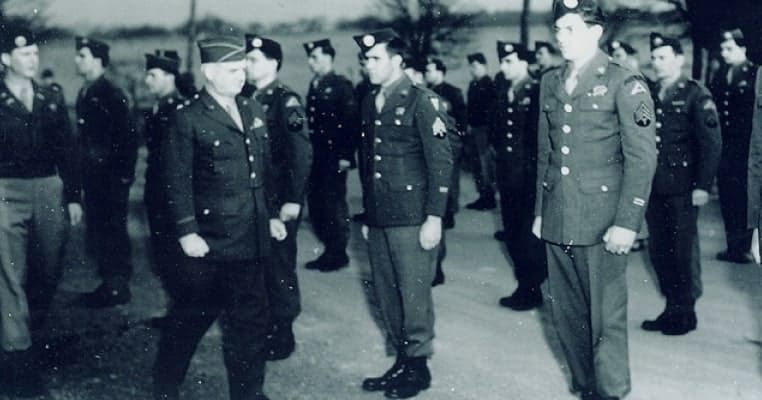William Colby, former Director of the Central Intelligence Agency, is best remembered for his stint as America’s top spy from 1973 to 1976. It was a precarious stretch for the CIA, during which Congress, in a reformist mood after the Watergate scandal, launched investigations that unmasked many of the agency’s worst abuses. As the man on the spot, Colby became associated with the rot emanating from Langley. However, there was a time, decades earlier, when William Colby had been a bona fide American hero, parachuting into Nazi-occupied Europe to carry out dangerous operations that stuck it to Hitler and the Third Reich.
The last of those, Operation RYPE, came in 1945, when Colby parachuted into Norway at the head of an Office of Strategic Services (OSS) team. Their task was to blow up rail links to impede the evacuation of the German occupiers, and keep them from reinforcing the Third Reich’s crumbling eastern and western fronts. It turned into a hair raising mission that started off horrifically, and remained harrowing until the end. Nonetheless, Colby managed to snatch success from the jaws of catastrophe, and accomplished the mission.

William Colby and the OSS
William Egan Colby (1920 – 1996) was born in St. Paul, Minnesota, the son of a US Army officer. Although the father was a career soldier, his pursuits focused more on the intellectual and scholarly contributions to the military, rather than on the strictly military. While serving in the Army, Colby’s father was also an author and scholar who did stints as an English professor in Vermont, Georgia, Washington, DC, and overseas in far off China.
That mobile childhood left its mark on William Colby, broadened his horizons, and ingrained in him an interest in world affairs and a thirst for adventure. In 1936, at age 16, he seriously considered fighting in the Spanish Civil War with the American volunteers of the Abraham Lincoln Brigade against general Francisco Franco’s fascists. Instead, he ended up accepting a scholarship to study at Princeton University, and after graduating with a political science degree, he went to Columbia Law School in 1940. Colby dropped out of law school after his first year to join the army, and was commissioned a second lieutenant in August of 1941.
His career began in Fort Sill, Oklahoma, where he trained to become an artillery officer. He then signed up for an experimental airborne artillery unit whose concept seemed ridiculous to Colby, but whose training, he figured, would get him qualified as a parachutist – something that was all the rage for the adventurous in the early 1940s. He got the parachute training, as well as training in demolitions and small arms. While Colby was learning how to jump out of airplanes and blow stuff up, a new organization, that would exhibit a keen interest in people with interests and qualifications like Colby’s, came into being.

The Office of Strategic Services (OSS), the CIA’s predecessor, was created in June of 1942 to collect and analyze strategic intelligence, and to carry out “special activities”. Operating under the overall command of America’s joint chiefs of staff, the OSS was headed by William “Wild Bill” Donovan, a WWI Medal of Honor winner and personal friend of the president. Like FDR (and William Colby), the OSS chief was an Ivy Leaguer and Columbia Law School alumnus, and he saw to it that his organization recruited heavily from Ivy League circles. Colby, with Princeton and Columbia on his resume, an international background, a thirst for adventure, and a qualified parachutist with demolition training, was just the type the OSS was looking for.
Colby was accepted into the OSS in 1943, and received intensive training in guerrilla tactics to operate as a “Jedburgh” – OSS agents who worked with resistance forces in occupied Europe, and whose program motto was “Surprise, Kill, and Vanish“. In his first mission, Colby deployed into France as a Jedburgh team commander, working with rural guerrillas of the French Resistance. It entailed harrowing adventures, starting with a pilot who mistakenly dropped him 20 miles off target, in the middle of a German occupied village, and including a narrow escape from a collaborationist traitor who almost delivered him to the Gestapo.

